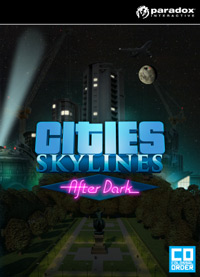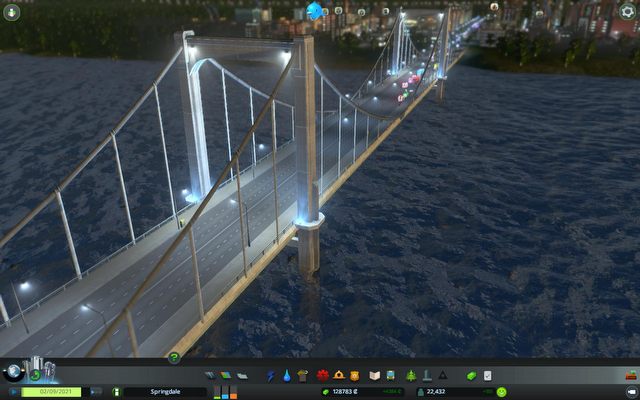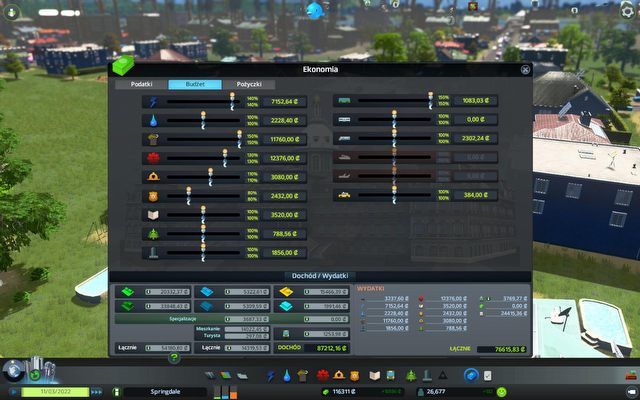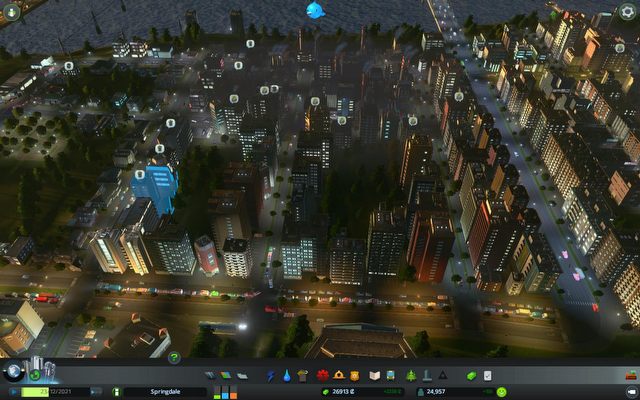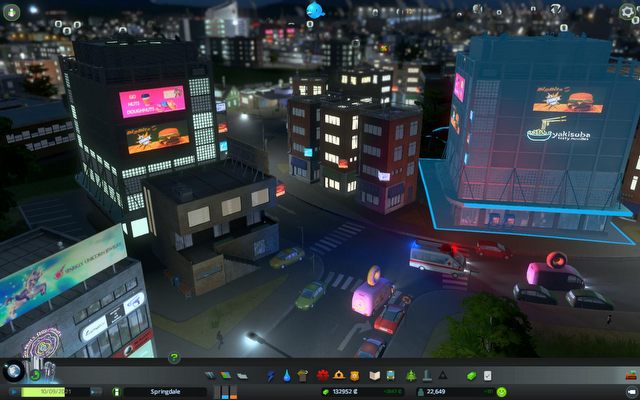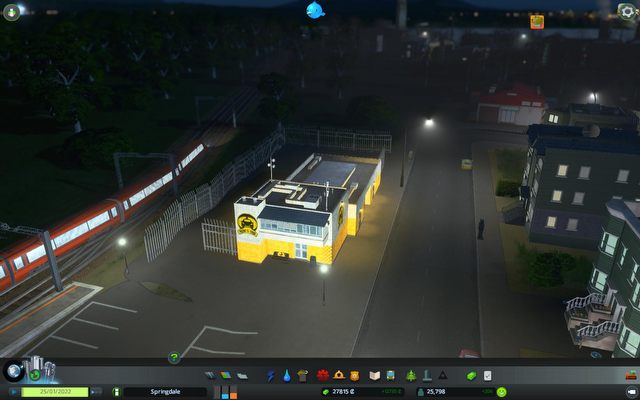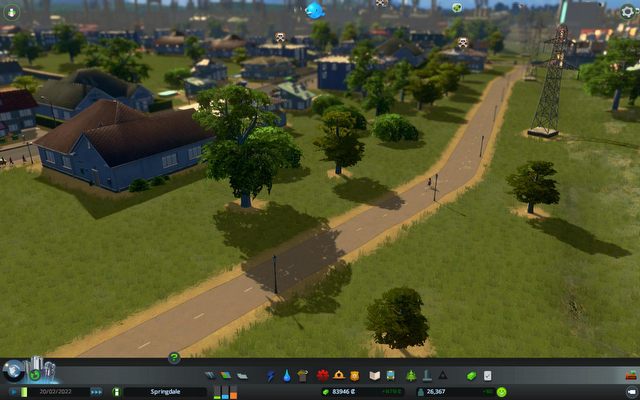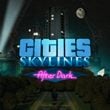Cities: Skylines expansion review – what mayors do After Dark?
Strange things happen in the course of a city’s nightlife – the same is true when playing After Dark, the first big expansion for the popular city-builder Cities: Skylines.
The review is based on the PC version.

- night and day cycle;
- specialized districts;
- new transport infrastructure;
- new buildings;
- upgraded visuals.
- increased hardware requirements;
- issues with mod support;
- a bit too pricey for the content it offers.
Most of the cities of the world become more dangerous at night, as they shift to a more “playful” mood. The Finns from Colossal Order wanted to give us a taste of the nightlife, when they created the first big expansion for one of the best (if not THE best) city-building games we’ve seen in recent years - the well-received and ridiculously entertaining Cities: Skylines. And although I was expecting a bit more from the new expansion, what I got is a very relevant add-on that introduces several interesting changes.
As the title suggests, the biggest innovation featured in After Dark is the addition of a dynamic night and day cycle. Initially, the change will be noticeable only in the visuals – when the night falls, the streets will instantly illuminate with thousands of lamplights, multicoloured glowing billboards, or simply the lights of homesteads. Sometimes, especially in case of somewhat bigger metropolises, it is an impressive sight – and if we managed to build enough skyscrapers and other large-scale structures, taking a bird’s eye view of our creation can be a marvellous experience.
Soon, however, we notice that any visual changes prompted by the nightfall are rendered irrelevant by the staggering number of new bills required to keep your city running. Suddenly, you become aware that turning on the lights in the whole city requires some serious money and that somebody has to pay for it. That’s not the only surprise the game has in store – the criminals thrive in darkness; and they prefer industrial zones. As a direct consequence, if we want to keep your city (and its residents) peaceful and happy, be prepared to increase the number of police stations and allocate additional funds to night time police activities, That’s right, with the expansion we can specify the amount of money we commit for each municipal service both during the day and the night.
For the same reasons, there are some municipal services that don’t need to be as busy after the sunset as they are in the daylight, which leads to some savings. Let’s take public transportation for example: the frequency of buses and trains can be significantly reduced for the duration of the night. The same applies to garbage disposal; the city will be cleaned only when a need arises. Night is also a good time to take care of other things, i.e. finding some free space on the landfill or expanding the cemetery.
As we can see, there’s no dozing off during the night hours – the creators have tackled the issue with competence, and there’s a whole lot of things that need to be done after dark for our city to operate efficiently and, what’s most important, without financial problems. One more way to increase our income are the district specializations, which can draw in more tourists or perhaps even some night-time party animals to specific areas. Obviously, the most economically sound option is a dedicated commercial district, active all around the clock, which yields a vastly bigger income, but also generates more work for law enforcement. Don’t be surprised the next morning, when you’ll see dozens of citizens demanding quiet at night. Placing the residential zones a bit farther is the best thing you can do in this situation.
An interesting option to gain a big number of tourists is a beach, which can be placed on the outskirts of the city and “wrapped up” in various attractions – our virtual residents and guests alike can be offered a representative jetty or a facility where they can rent a jet ski. Let’s not forget, though, that placing either of those near a water pumping station or a sewage pipe may not be the best idea. The citizens may come back home with various diseases, which can cause an epidemic, and could eventually render the whole situation uncontrollable.
For the „nightlife” districts or the abovementioned water facilities to yield a certain level of financial return, they need to be properly integrated into the city’s transportation network. A good solution would be an additional, dedicated bus line, or maybe one of the newly introduced transport options. The newly added bus terminal can simultaneously operate many more lines than the traditional bus depot. Another good way to cover weak spots in your transport services, especially at night, are taxi stands. They may be not the most profitable of services, but they provide a fast and comfortable way for the passengers to reach their destination. Furthermore, additional stands can be placed to significantly reduce the time people have to wait for a taxi.
Nevertheless, the team from Colossal Order hasn’t forgotten about some other means of transportation that have been recently very popular in modern big cities. Cycle paths, for example; not only can a well designed network of cycle paths significantly reduce the jams on your roads, it will also help reduce the air pollution. A road with a dedicated bus lane, available for taxis as well, can work wonders for the overall efficiency of transport services. Thus, if our city is of the rather well developed sort, and many residents tend to rely on buses, we may want to seriously consider employing this solution. Should our efforts be aimed at drawing in a bigger number of tourists, sooner or later an international airport will have to be constructed. The cost may seem enormous at first, but the tourists tend to leave so much money in your hotels and clubs that in the long run, the whole investment will pay for itself with a nice bonus.
However, there’s more to life than transportation – players who believe in slow, but successful social rehabilitation of sentenced criminals should ask their architects for the plans of a prison, which can hold a significant number of felons and, after some time, return them as responsible citizens. A big harbor allowing for increased movement of goods will widen the variety of wares available in retail, which helps both the citizens’ happiness and the city’s finances.
As I have mentioned earlier, the creators have implemented numerous visual improvements, making it possible for Cities: Skylines to look more than nice, especially at night. Unfortunately, the visual upgrades are visible in the hardware requirements as well. I’ve noticed that the game began to lose its frame rate a lot more often than it used to, especially when we zoom in the camera of scroll through the city. Furthermore, I’ve witnessed the game to freeze for a few seconds from time to time; that’s something that has never happened to me while playing the basic edition.
Cities: Skylines is a game, which, in terms of developer support, can only be compared to the situation with SCS Software and their Euro Truck Simulator 2. The gamers are given new patches on a regular basis. Many of them not only solve stability issues, but also some problematic aspects of the gameplay – there were, for example, improvements intended for traffic and traffic jams. Very often the devs release new maps, where the players can build their cities, special ‘skins” to change the looks of buildings, or some useful structures like pedestrian underpasses. The creators promise to continue supporting the game for as long as it will be possible and, according to them, After Dark is just the beginning.
With the coming of After Dark one more problem emerged from the shadows, and those of you who like to use mods won’t be happy with it. As it turns out, many mods refuse to work with the expansion, which renders them completely unusable. The Finns have promised to restore full support of mods, but I’m afraid that it’s not a thing that can be done overnight.
After Dark is overall a pretty good expansion, introducing some new features that the players were keen to see implemented since long. While the day-night cycle has been cleverly implemented and adds much flavor to the gameplay, the dozen+ new buildings and transportation solutions have made designing the network of main roads that much easier, and the citizens’ needs and security can now be better provided for. Is this a good enough reason to spend $15 on an expansion pack? There will be no need to persuade the fans of the game, that’s for sure. The rest of us should wait for a small discount, as the content-to-price ration could be better.
Cities: Skylines - After Dark
Strange things happen in the course of a city’s nightlife – the same is true when playing After Dark, the first big expansion for the popular city-builder Cities: Skylines.
